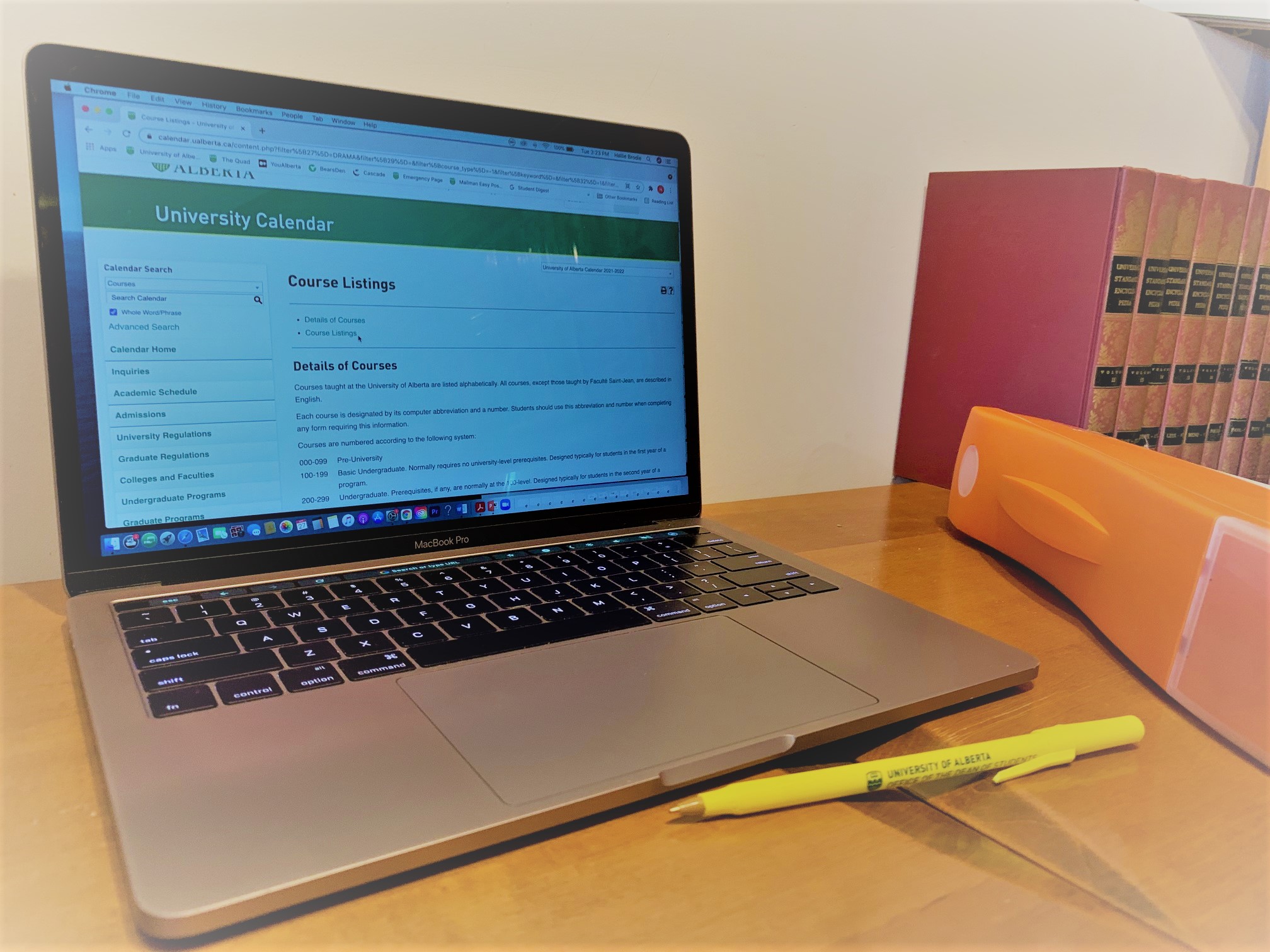It’s a little later than usual, but it’s that time again: scheduling time.
While this past year remains unlike any other, the art of building your Fall course schedule is one tradition that remains mostly the same. To help you start your Fall 2021 plans, here are a few useful tips to consider while you build your course schedule this time around.
Do a program check
Program checks are pretty easy to do and they help lay out the status of your degree requirements. Put another way, they let you see which credit requirements you’ve already met and which ones you still need to achieve. You can request a program check by contacting your faculty office. Keep in mind, processing your program check can sometimes take a few weeks to complete.
It’s always a good idea to talk to an advisor before building your schedule. Your faculty/department/program advisor can help you talk through course load considerations, degree requirements, and they can help you determine what courses might be a good fit based on your post-degree plans. They’re here to help.
Peruse the Academic Calendar
The calendar will layout your program requirements, but it also has a list of all the courses offered by the university. Once you know what courses you have to take, and what kind of options you can study, the Course Listings section is a good place to check out. It will allow you to see things like course codes, prerequisites, and general course descriptions. All of which will be helpful when you are ready to start puzzling together a schedule.
Check out the Department Sites
A number of departments post course descriptions on their website— and some of them even include past syllabi. Course descriptions listed on department sites are usually more detailed than what you’ll find in the calendar, especially if you can find a copy of an old syllabus. While next year’s instructor for a course may do things differently, a previous year’s course syllabus can at least provide you a sense of what kind of topics, readings, assignment styles could be like for a given course.
Make a spreadsheet for yourself
This tip is courtesy of YouAlberta blogger-emeriti Edward: “I always suggest to my friends to make a spreadsheet, laying out all the courses they’ve taken, and all the courses they’re planning on taking. This helps to visualize your entire degree. You can jot down other classes you might want to take down the road or you can even calculate how many credits of each degree requirement you have. It’s really up to you.
I colour code my spreadsheet according to my different degree requirements. Since I’m a Biological Sciences Major and a Sociology Minor, I’ve colour coded my courses to categories: Bio Sci, Sociology, Science, Arts and Others (non-science/arts).”

The main takeaway here: write out the list of courses you’ve taken, but also write out the courses you’re interested in. Having a list of which courses will meet your degree requirements AND knowing which ones simply sound interesting will be useful when the time comes to start searching the schedule in Bear Tracks. Knowing what you’re interested in to start will make everything else much easier.
Head into Bear Tracks Tracks
Once you know what courses you’re interested in, it’s time to see what’s been offered and when. Once you’re in Bear Tracks Tracks, head to the “Shopping Cart” section— this is the new name for “Schedule Builder.”
Once you’re in the Shopping Cart for the semester you’ll have different options available to search. If you’ve already made a list of specific courses that you’re interested in taking next year, it’s recommended that you search for the specific course that you want. For example if you know that you’d like to take DRAMA 208, search for “DRAMA 208.” That way you can avoid the drama of scrolling through every DRAMA course and section, and can instead see the section offerings for the specific course you want.
When you find a course section that you like, click the “Cart” button to add it to your schedule. Once your enrollment day happens, you’ll have a list— or cart— of courses saved and awaiting your click of the “enrol” button to register. If you have a list like this saved in your Bear Tracks, you should be able to avoid a full-scale search to find all the courses you want on registration day.
For more information, read: Bear Tracks Tracks Registration and Enrollment Tips.
When in Bear Tracks, you might spot the “Planner” option. While a helpful tool to help you list the courses that you might be interested in taking over the course of your whole degree, keep in mind that this tool will not build your schedule for you. To build your schedule, you’ll still need to use the “Shopping Cart” feature.
Check the USRI’s
We all know that there are plenty of online tools that can rate our professors, but they can be extremely subjective. So how do you get a better feel for a prof or a course? USRI’s.
USRI stands for “Universal Student Ratings of Instruction.” You know all those course evaluations you do at the end of each term? Not only do they serve to help instructors evaluate what (or didn’t) work well in a given term, they also help students. Students can review the results to learn more about how a course has been taught in the past. Again, the results of a USRI do not mean that a course will be taught the same way in the future, but they do provide a more standardized set of student perspectives.
For more information about making the most of Bear Tracks, check out the Bear Tracks Help page. You’ll find tips and instructions to help you add/drop classes, register for courses, apply to graduate, change programs, and more.
